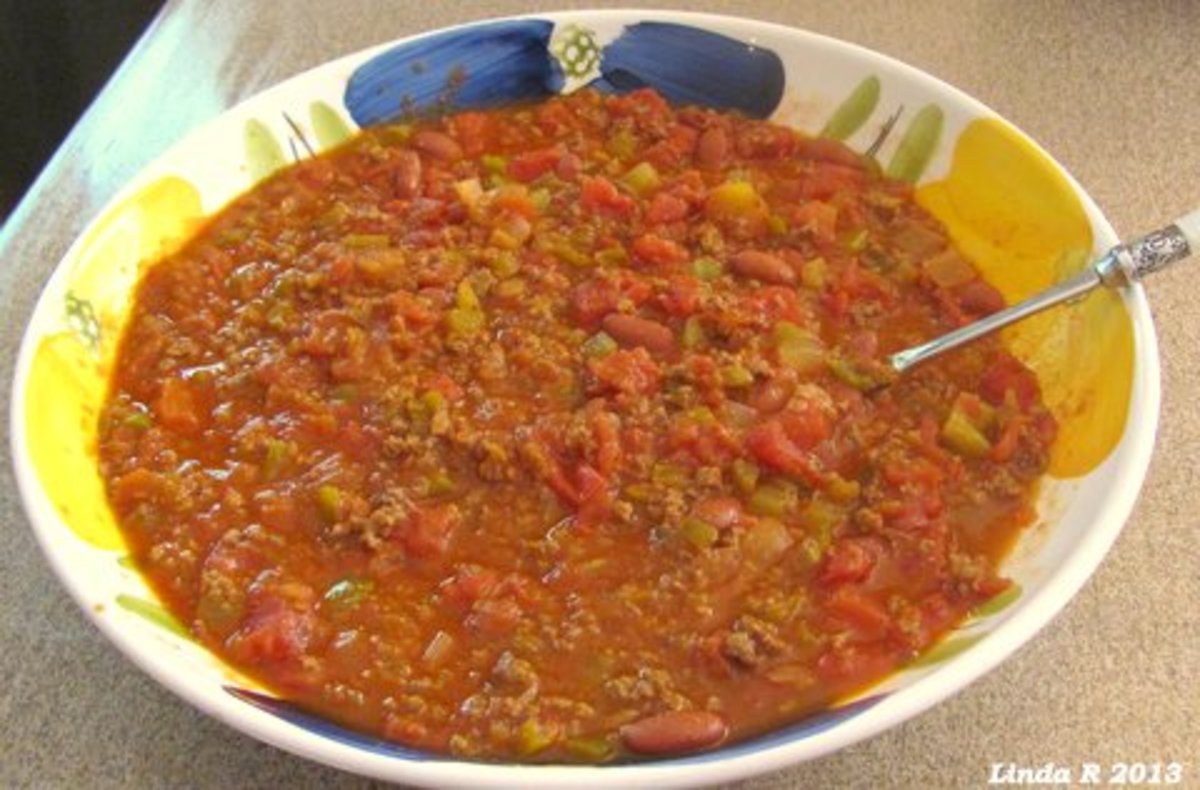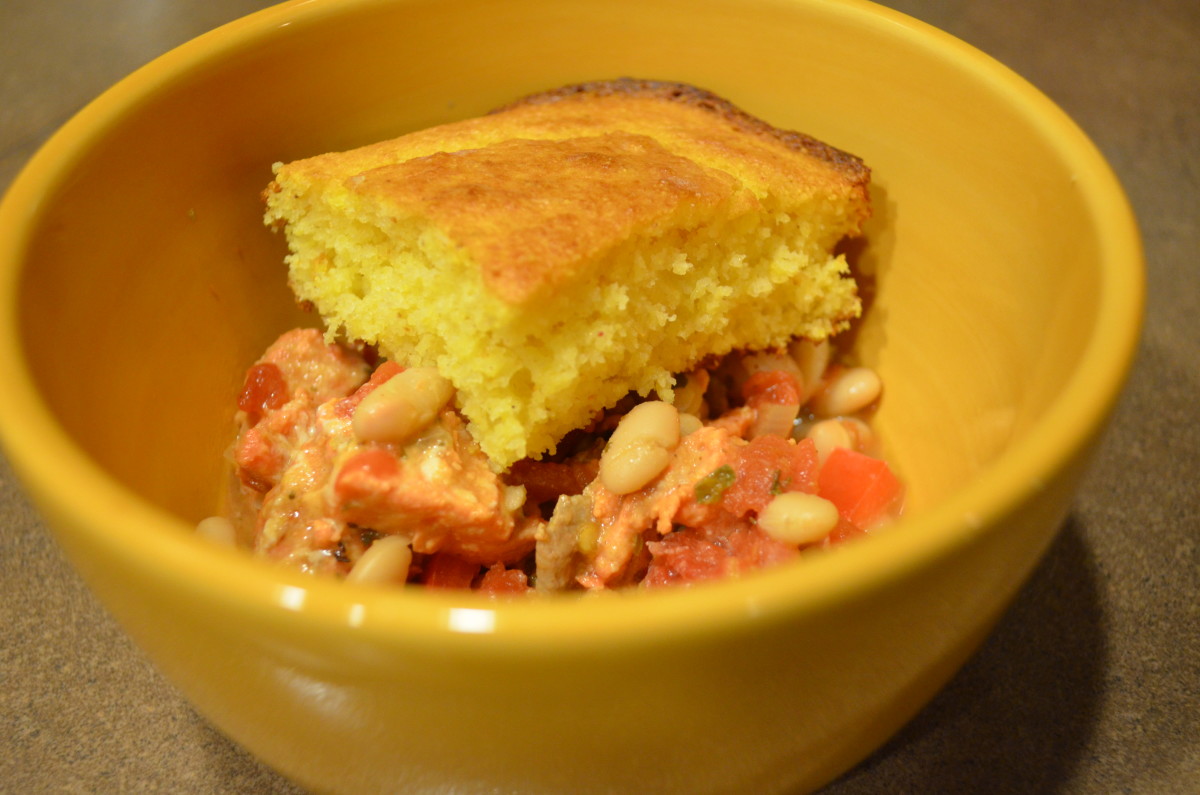- HubPages»
- Food and Cooking»
- Main Dish & Side Dish Recipes»
- Stew Recipes
Beef Stew Recipe - How to Make Beef Stew
Perfect Homemade Beef Stew
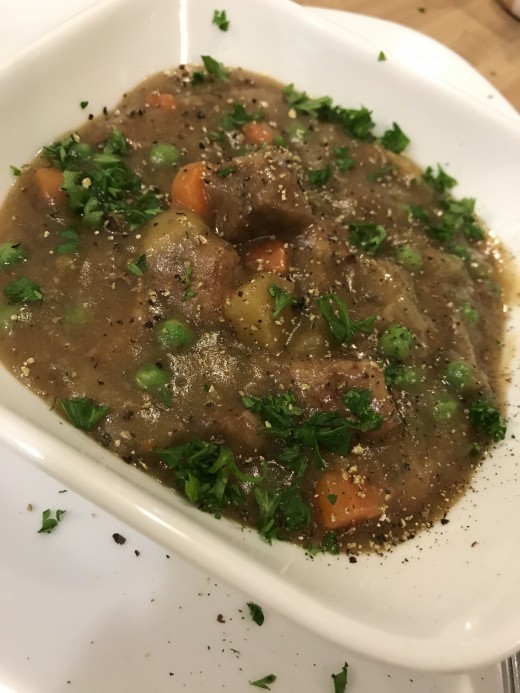
Check out the slow cooker version!
Beef Stew Recipe - How to Make Beef Stew
I have to admit, most of the time when I make beef stew, it's from a leftover pot roast. It's just good - and a super easy way to produce a second meal from leftovers - especially when you plan on the leftovers. It's hard to get better than that.
Hard - but not impossible. If you want beef stew from scratch, without the intervening pot roast, then I can almost guarantee you'll be spoiled. This stew is just about perfect - rich and hearty, with juicy, succulent pieces of beef and tender vegetables, all cloaked in a phenomenally flavorful gravy. This stew shares some elements with some of the world's finest classic dishes - such as Irish Lamb Stew, Beef and Guinness and Boef Bourgignon - the long slow cooking with a touch of alcohol results in amazing flavors. Sure - the pot roast version is fast and easy - and tastes good. But this way is the ultimate comfort food way.
Serve this stew with just about any type of bread, but crusty Italian or sourdough is fabulous, as are either Cheddar or Buttermilk Biscuits. And with most stews, it gets even better the second day.
You can adapt this recipe to your favorite cooking tools - use either a Dutch oven or a slow cooker. It's your food, make it the way that works best for you! To use a slow cooker, add all the ingredients except the vegetables and set it to low for 6 hours. Add the vegetables and remaining ingredients, and cook another 2 hours. Simple, huh?
Dutch Oven or Crock Pot?
It doesn't matter - so make it how it works best for you! Both methods are perfect for stewing - a long, slow cooking time in a tightly closed container with liquid. Use a slow cooker if you want to leave it for the day. Dutch ovens are best for a slightly quicker cooking time.
How to Make Beef Stew
I'll give a full recipe below, but I want to talk a little bit about stewing, and what makes a terrific beef stew. There are several elements, and each brings its own contribution to the party. In a nutshell. you'll need:
- protein - in this case, beef
- aromatics - garlic, onion, rosemary and bay leaf
- liquid - I like a little wine and beef broth
- vegetables - potato, onion, and carrot are classic but consider parsnip as well
- something 'fresh' to finish with - fresh or frozen peas and a bit of fresh parsley are perfect
- some type of thickener - flour, cornstarch or both
Stewing is a method of cooking. It simply means to brown meats or veggies, add liquid, then cook at a low temperature for an extended period of time. If you do this with a roast it's called braising - it's the same concept. The long, slow cooking allows for a couple of things to happen. The cartilage and connective tissue in the meat break down in the slow, extended heat, leading to velvety soft meat, a juicy and tender texture. You also end up with an extended period to tenderize vegetables, and all the flavors in the pot have time to marry and get nice and happy with each other. That's also why some dishes are often even better the next day - time gets to work its own magic on the combination of ingredients.
Now let's talk about each of these elements, so you'll be able to adapt and perfect the recipe to your own taste each time!
Best Beef for Beef Stew
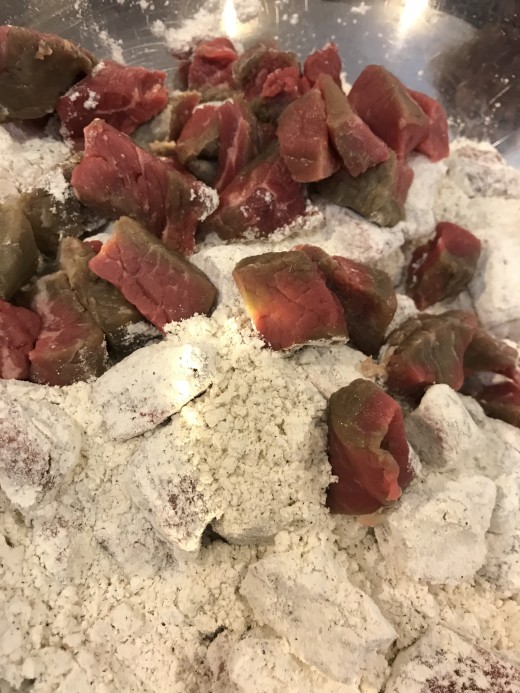
1. Beef for Beef Stew - What to Choose and How to Buy It
There are two simple ways to get the right beef for your beef stew. The most economical, in my own opinion, is to purchase chuck roast. This can often be found for under $4 per pound, and if you watch for sales or buy in bulk, you can find it for less than $3 per pound. That's the way I buy it most of the time. I tend to buy in bulk at the major warehouse club, which means I can get it for less than $3 per pound. $3 a pound is the limit I impose on myself when purchasing meats, and I then invest a little time in prep and storage to maximize my purchases. So buy a chuck roast, cut it into 1-inch cubes yourself, and save yourself a good bit of money.
The second and more common way is to purchase pre-cut 'stew meat' at the grocery store. While it tends to run higher than buying a chuck roast, at $4-5 per pound, it's faster. It may work better for you to buy it this way if you cook for a smaller family or if you're pressed for time. Stew meat is often cut from just the chuck roast, so you pay a bit for the convenience. However, sometimes packages of stew meat pre-cut at the store contain the little bits and pieces from several types of roast, so the consistency can be uneven.
It's also my personal opinion that pre-cut beef stew is too big. Think about the finished product - how much do you want in a bite? I tend to like smaller bites - I think it's just nicer to eat. I cut pre-cut stew meat into approximately 1-inch pieces. You also get more surface area for browning this way, which means more flavor. The smaller pieces cook more evenly and consistently and help develop a rich, silky sauce in a bit less time. It's a small extra step, but one well worth doing.
Fresh Thyme
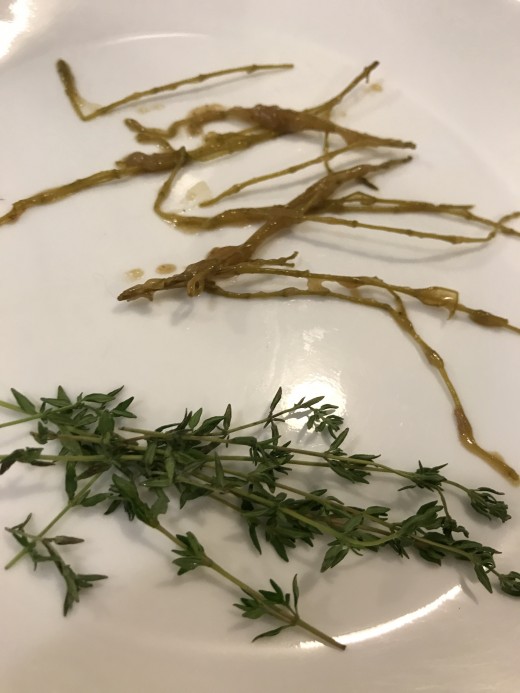
2. Aromatics - Where the Flavor Starts!
Now you can turn your attention to aromatics, which bring a ton of flavor. Aromatics are any ingredient with a strong, heady aroma, and include onion, garlic, bay leaf, rosemary, and thyme. You want to stick with just a few, so the flavors complement one another and don't compete.
You also want to use aromatics that enhance and support a bold, beefy flavor. The ones I've listed do just that, but they don't overwhelm or supplant it. Onions and garlic sweeten with cooking and will lend flavor to the beef, the sauce and the vegetables all three.
Be careful to stick to just a few aromatics. The ones I listed here all play well together. Much more than this and the flavors could get a little muddy. I adore fresh oregano, but it can quickly overwhelm a dish if you aren't careful. The same with fresh rosemary - a little bit is gorgeous, but too much and the stew can taste like a pine scented air freshener. So take it simple at first, and add sparingly until you know exactly how you want it.
Season as You Go!
Season as you cook. If you season each stage lightly, then taste and adjust right before you serve, you'll find it's perfect. Seasoning the beef before searing, the broth as you add it, and the vegetables once added means your finished dish will taste rich and deeply flavored. Waiting until the end will lead to a stew that tastes more one-dimensional - salty instead of seasoned. So give your food the chance to develop full, rich flavor.
Add Just Enough Liquid to Cover
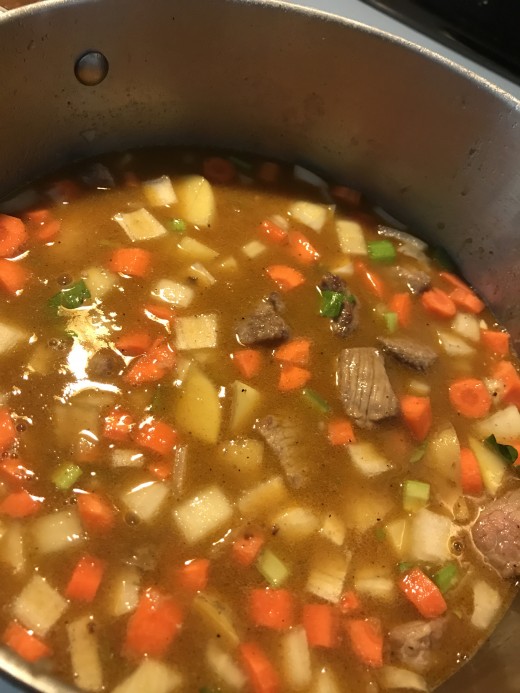
3. Add Liquid - Wine and Broth are Best for Beef Stew
When choosing liquid, you want to use what will add flavor itself. I've seen recipes with just water, and that can work. But a little wine will help deglaze the pot and add a bit of acid, which is wonderful against the rich, unctuous flavors that are going to develop.
The bulk of the liquid should come from a nice beef stock. Homemade is, of course, best, but there are some really nice, high-quality beef stocks on the market. If you don't make your own (and honestly I do only sometimes), choose a no-sodium version so you can control the seasoning yourself. I think the recipe calls for four cups, but you're really looking for just enough to barely submerge your ingredients.
I include tomato paste as a liquid since it brings so much flavor to the stew. You'll want to include it when you brown the last batch of beef, and right before you add the wine and broth. Letting the tomato paste brown up for a few minutes before deglazing the pan will add an incredible depth and dimension.
If you want to skip the wine, or you just don't have it, feel free. But add a tablespoon of red wine vinegar to the broth. Wine brings a needed bit of acidity, but you can certainly get it with a good vinegar and the results will still be wonderful.
Adding the Vegetables
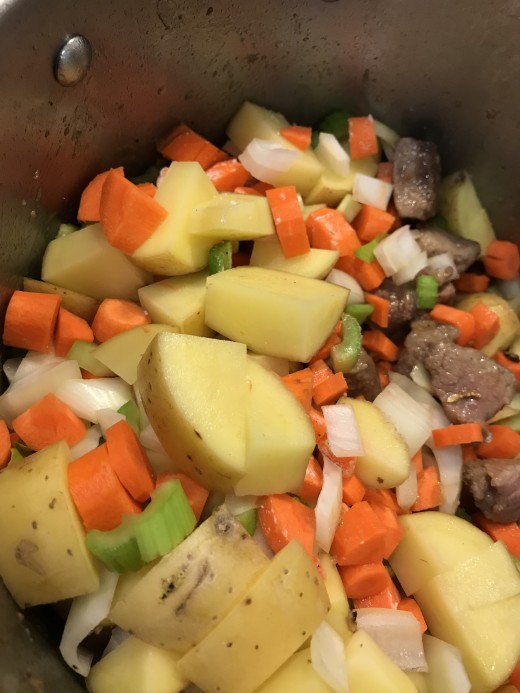
4. Vegetables for Beef Stew
Bring on your veggies! I've included four in this recipe, but you can tailor them however you like. Onion, celery, potato, and carrot are my favorites. The onion and celery sweeten as they cook, and the liquid leeches into the sauce, giving great depth of flavor. Potatoes give body, and carrots add a beautiful earthy sweetness. In addition, the potato starches help thicken the sauce, lending a silky quality. I like to use waxy potatoes, such as a Yukon Gold, but Russet or Irish potatoes are wonderful as well.
If you have them, you may try adding parsnips. They have a lovely sweetness similar to a carrot and take long, slow cooking well. Another possibility is a turnip, but be careful with these. Turnips have a distinct, earthy flavor which I personally adore, but they can overwhelm the delicate balance of this stew. So if you use turnips, use them sparingly.
5. Find Something Fresh to Finish Your Beef Stew
There are two things I like to add last minute to beef stew, and both serve to add a pop of bright color and flavor to the final dish. The first is a handful of peas - and I almost always use frozen ones. Peas are picked and flash frozen so quickly that they retain the majority of their nutrients, and you can throw them in straight out of the package. Even frozen, they take no more than five minutes to heat through and cook, and the flavor is perfect against the rich flavors of the stew. The contrast between the thick stew and the bright fresh peas is just about perfect.
I also like to sprinkle the finished stew with minced fresh parsley just before serving. Again it's for the contrast of flavors, and the slightly citrus, bright green flavor of parsley is just right for this. Add it as you ladle the stew into serving bowls - just a sprinkle. You'll love the result.
Make a Slurry
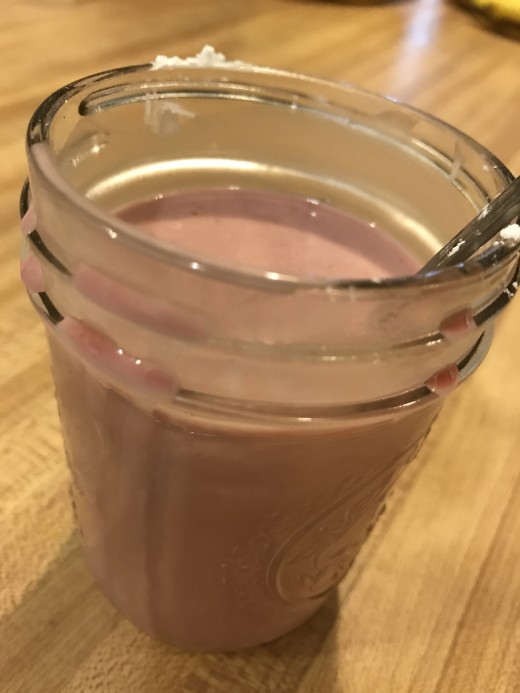
6. The Thickeners for Beef Stew
This particular recipe has three different thickeners for the beef stew. The flour from browning the beef, the potatoes, and the cornstarch all work to bind the sauce. Because the flour in the first step is browned off, it won't have much thickening power, but it will have some.
The starches from the potatoes will also leach into the cooking liquid, and the starches will also help thicken it some. Again, it won't do much, but it will do some. The potato starches will also give the liquid a beautiful silky texture, so that's a win-win!
Finally, to get a truly thickened, silky sauce, use cornstarch and a bit of water. Cornstarch will come to full thickening capacity as soon as it hits a boil, so this is done at the last minute, right before serving. These three elements together will make the perfect sauce for the beef stew.
Brown the Seasoned, Floured Beef
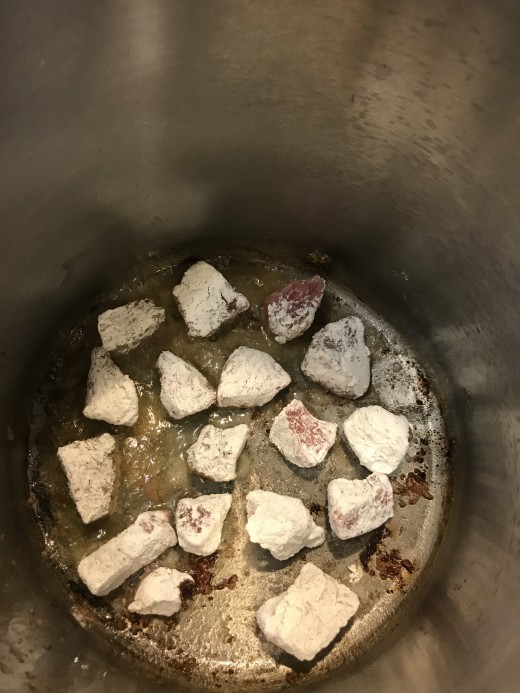
Ingredients
You'll need:
- 3 pounds cubed beef stew meat, or better, 3 pounds chuck roast, cut into one inch pieces
- 1/2 cup flour
- 2 teaspoons garlic powder
- 2 teaspoons onion powder
- 2 teaspoons kosher salt
- 2 teaspoons black pepper
- 3 tablespoons vegetable oil
- 1/2 cup red wine (white will work in a pinch but red is better)
- 4 cups beef broth
- 1 teaspoon dried rosemary
- 1 teaspoon dried parsley
- 1 tablespoon tomato paste
- 1 tablespoon Worchestershire sauce
- 4 large waxy potatoes, peeled and cubed
- 4 large carrots, cut into 1 inch pieces
- 4 stalks celery, cut into 1 inch pieces
- 2 large onions, chopped
- 2 tablespoons cornstarch
- 2 tablespoons cold water
- Optionals - garnish with fresh chopped parsley, or toss in a cup of frozen peas just at the very end so they just heat through - the bright fresh flavors of both just pop.
Browning the Stew Meat
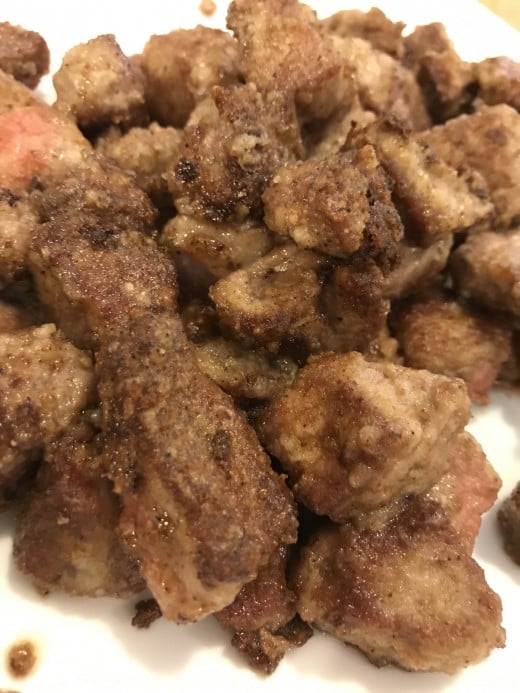
Directions
- Place flour, garlic powder, onion powder, salt and pepper in a large bowl or gallon size baggie and whisk well. Add cubed stew meat or chuck roast pieces and toss to coat.
- in a large Dutch oven, heat oil. Working in batches so as not to crowd the meat, brown beef on all sides. As each batch is done, set it aside.
- Once all beef is browned, deglazed the pot with the red wine, stirring to scrape up the brown bits off the bottom of the pot. Add the beef broth, rosemary, parsley, tomato paste, and worchestershire sauce.
- Bring to a boil, reduce heat to a simmer, cover and allow pot to simmer for one hour.
- Add potatoes, carrots, celery, and onions to the pot. Stir well. In a small bowl, make a paste of the cornstarch and water. Add to the pot. Cover and simmer for one hour.
Check out my YouTube Channel!
- Jan Charles - YouTube
You CAN cook! No matter your age, background or experience – YOU can cook. This is the cooking channel to help you regardless of what you need, whether it be...


